6. Fort Apache (1948)
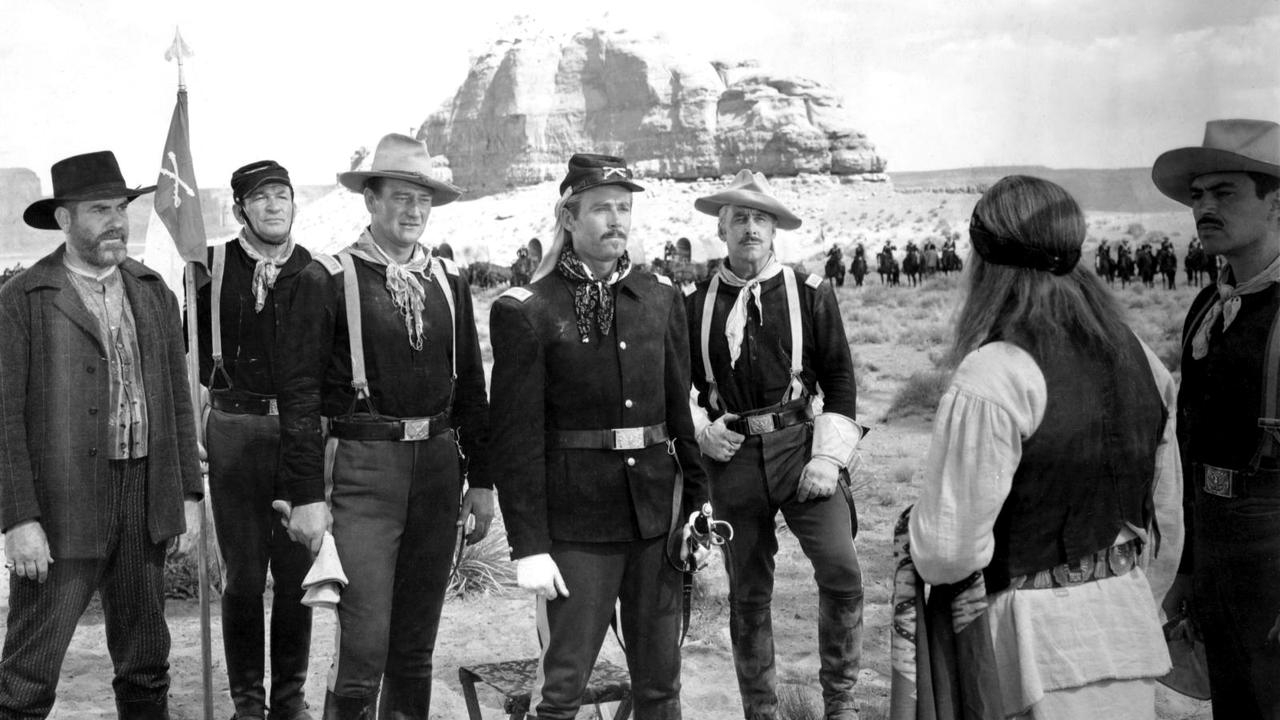
In this film, John Wayne plays Captain Kirby York, a Civil War veteran and highly respected leader who is overlooked for a promotion in favor of Lieutenant Colonel Owen Thursday, played by Henry Fonda. Shirley Temple appears in this film, playing the Colonel’s daughter, who falls in love with one of the soldiers. The two families disapprove of their children’s relationship, a point of contention that produces much of the comedic moments in this film.
Wayne’s character, York, promotes fairness and respect as the ways to remedy the problems the army is having with the Apache nations nearby. Refusing to listen to York’s advice, Colonel Thursday (Fonda) leads the group into much mayhem, as a direct result of his prejudice. The Colonel’s anger sees York and Thursday get into a fight, with York desperately trying to prevent a disaster. Thursday removes York from duty, and charges into Cochise’s territory in a direct assault that actually occurred in history. The charge is known today as “Thursday’s Charge” the battle in the film, as well as in reality, ended with the soldiers being massacred.
There are several small mentions and set designs in the film, which are considered by hindsight to be nods to relatives of the actors who fought in the Civil War, though none of the references have been confirmed.
5. She Wore a Yellow Ribbon (1949)
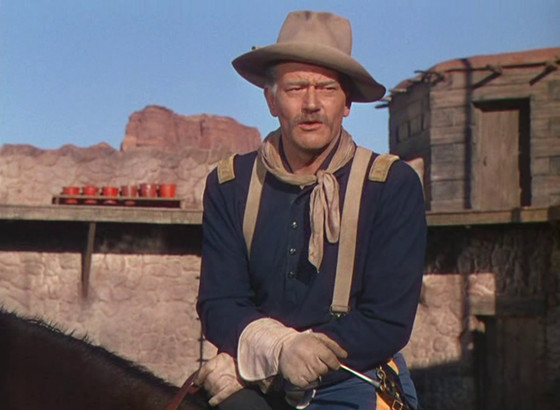
John Wayne plays a character that is two decades older than John Wayne himself was at the time, a factor that John Ford considered an obstacle to Wayne’s believability in this role. After seeing Wayne in Red River, Ford was impressed with Wayne’s dramatic chops and cast him in the lead role. When they completed shooting for this film, Ford presented John Wayne with a cake that proclaimed “You’re an actor now.” The film follows a Calvary Captain who is retiring from the army. His last mission is to take his troops and stop an uprising from the Cheyenne and Arapaho, after the defeat of General Custer at Little Big Horn.
While primarily a dramatic film and classic American western, the film features iconic lines from John Wayne such as “Picnicking, Miss Dandridge?” that prove John Wayne can be both tough and personable on screen. This film, like the others, features iconic landscape scenes for which cinematographer Winton Hoch won an Academy Award in 1950. One of the most memorable scenes in this film shows a thunderstorm rolling in behind the cavalry, a feat that was accomplished when a real thunderstorm rolled up during filming. The cast and crew expected Ford to close up shop during the storm, and instead he ordered the cameras to keep rolling.
4. The Man Who Shot Liberty Valance (1962)
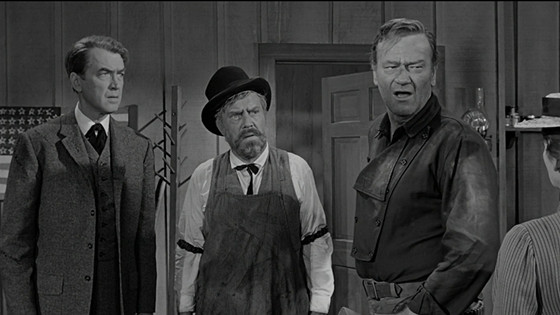
Built entirely on a flashback, this film tells the story of a rancher who earned the respect of a soon-to-become state Senator, as they both learn a powerful lesson about justice. James Stewart stars as Ranse Stoddard and John Wayne stars as Tom Doniphon. Some historians claim that Ford shot this film in black and white, despite color being the medium of the day by this point, because he felt the climatic fight scene would not have worked in color. Other historians claim the choice was due to budget constraints at Paramount. Regardless of why they chose black and white, this film stands in contrast to Ford’s other westerns for it’s lack of large open vista shots of powerful western topography.
This film sees John Wayne teach Jimmy Stewart’s character how to shoot a gun in a scene that is comical today with Wayne’s reputation as a cowboy. Despite being well received when the film released in 1962, several cast and crew reported that Director Ford made working conditions quite difficult on this film with his constant negative comments about the actors, including Wayne and Stewart, who were attacked personally.
3. The Searchers (1956)
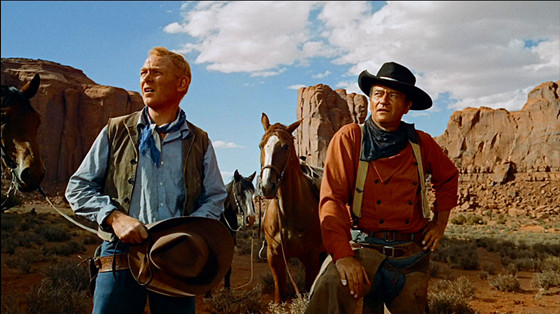
This film was the first major film to be documented in a behind the scenes making-of documentary. John Ford requested that the creation process be documented and the film shows preparation, prop construction, and film techniques. The film follows Ethan Edwards, a Civil War veteran, as he searches for his niece, who he discovers has been kidnapped by the Comanche Nation.
This film sees Wayne paired with some of his most famous western film partners including Harry Carey, Jr, and Ward Bond. This time Ford works with Warner Brothers to produce the film, setting the film in Texas. Ford wanted Fess Parker, known for playing Davy Crockett, to star in this film but Walt Disney, with whom Parker was under contract, did not allow it. Some historians claim the film is based on a real life story of a kidnapped girl named Cynthia Anne Parker, who was kidnapped by Comache warriors in Fort Parker, Texas in 1836. There are numerous parallels with the real life story to support this theory.
Despite being set in Texas, the film was shot in one of Ford’s classic locations, Monument Valley. This film is known for portraying a harsh opinion towards native Americans that was groundbreaking to put on film at the time, but has since caused controversy over race relations. Film scholars defend the film saying that not only are the perspectives of both White men and Native Americans historically accurate, but the point is to show what happens when a good man is driven past his limits into madness that degrades honor into vengeance.
This film has influenced many subsequent filmmakers including David Lean on Lawrence of Arabia, and John Huston’s The Treasure of the Sierra Madre. John Wayne’s line from this film “That’ll be the day” was etched into history as one of Wayne’s most memorable quotes and inspired Buddy Holly to write the song “That’ll be the day.”
2. The Quiet Man (1952)
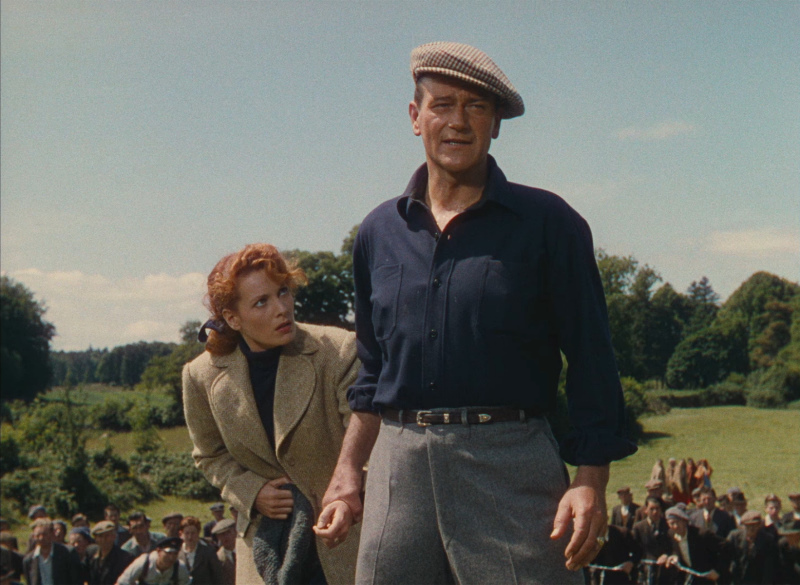
In one of his few non-western films, John Wayne plays a retired boxer who returns home to Ireland to buy the family farm and settle down. The film sees Wayne paired with longtime friend and collaborator, Maureen O’Hara, who herself being Irish by birth brings authenticity to the film. A romantic comedy, this film features an all star cast, many of whom appear in several films with Wayne throughout his career.
This film was based on a story that Ford had read in 1933 and liked so well, he wanted to turn it into a film. Unfortunately the studio he was working with at the time, Republic, felt that low budget westerns were more bankable than an Irish romantic comedy, and so refused to finance The Quiet Man unless Ford, O’Hara, and Wayne agreed to first film a western that Republic could rely on to earn money. The three agreed to the terms, quickly filmed Rio Grande, and then headed to Ireland to film The Quiet Man. One of the few films Republic filmed in Technicolor, the vibrant countryside and theme of Irish colors throughout the film, along with gorgeous costumes, make this a comedy to watch again and again.
1. Stagecoach (1939)
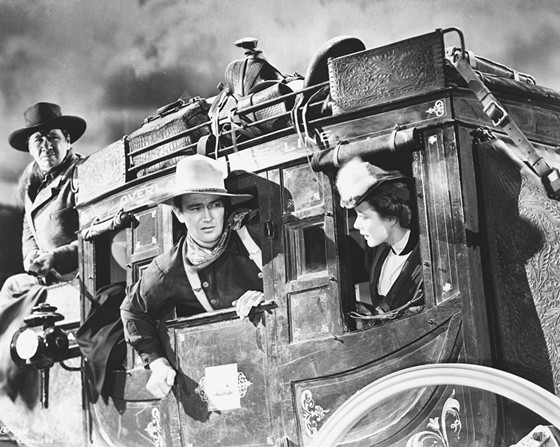
Set, as you might expect, on a stagecoach bound for the American West, this film follows a group of strangers who are trying to get through dangerous Apache territory. Serving as John Wayne’s breakout role, and arguably the film that established Wayne as a western icon, the film is artistically celebrated because of how the film portrays each of the characters on the stagecoach. With varying personalities and some less than savory career choices by the main characters, the film presents a picture of equality that lead the Library of Congress to select the film for preservation in the National Film Registry.
At the time this film was made, John Wayne was brand new, and unproven, as an actor. As a result, the studio selected to give Claire Trevor, an established actress certain to bring in ticket sales, top billing on the film. Despite not appearing in the top spot on the credits, John Wayne steals the show in this film, shining brightly as the anti-hero. Wayne owes a great deal to John Ford for his breakout role in this film, as well as for the success of Stagecoach, since it was John Ford, from the outset and against studio preference, who insisted on John Wayne to star in this film.
Shooting the film in the middle of the desert with a film crew housed on the Navajo Nation of Arizona, some of the most memorable scenes of Monument Valley appear in this film, a location that would appear not only in other Ford westerns, but would go on to be used as a trope in comedic depictions of westerns into the present day as a result of how famous Ford’s films made these locations.
From sea to shining sea, John Ford and John Wayne overcame studio bias, fights on set, and personal attacks to produce a series of powerful films that span the ages. Despite their differences, the two men work well together, creating movies that are both a professional success as well as a lasting legacy.